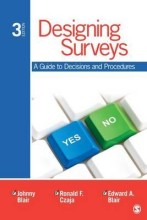C3: Cognitive development and risky decision making
12 important questions on C3: Cognitive development and risky decision making
What are five new cognitive skills in the transition from childhood to adolescence?
2. Combinatorial approach - systematic "attitude"
3. Scientific reasoning.
4. Distinction between theoretical laws and empirical findings.
5. Abstract thinking.
What are two components of scientific reasoning?
2. Proof logic.
What are four overlapping locial abilities in formal operations?
2. Hypothetical - deductive reasoning
3. Reflective - recursive thinking
4. Inter-propositional logic
- Higher grades + faster learning
- Never study anything twice
- 100% sure, 100% understanding
What is the conclusion of the study of De Neys and Everaerts of generating alternative causes and disabling conditions in conditional reasoning?
Piaget’s research has inspired theories of cognitive development beyond formal operations, known as post-formal thinking. What are two components?
2. Reflective judgment.
What two components of processing information become better in adolescence?
What are three methods emotions affect decision making?
2. Anticapatory emotions.
3. Incidental emotions/background mood (context effects).
What are three fundamental assumptions of the 'dual process cognitive-affective imbalance models'?
2. Adolescents exhibit strong bottum-up affective reactivity in response to socially relevant stimuli.
3. Adolescents are less capable in top-down cognitive control.
What is the result of the study of Albert, Chein & Steinberg (2013) of the pressence of peers at adolescents risky decision making?
What are three mechanisms for peer pressence effects on decision making?
2. Disrupting inhibitory control
3. Both
What are two types of risk takers?
2. Reactive.
(Risk avoiders: rely on gist).
What are three conditions for mitigation of a defendent and how does that relate to adolescents?
2. Extraordinary circumstances. (adolescents heightened vulnerability for coercive circumstances).
3. Out of character. (adolescents unformed character).
The question on the page originate from the summary of the following study material:
- A unique study and practice tool
- Never study anything twice again
- Get the grades you hope for
- 100% sure, 100% understanding































